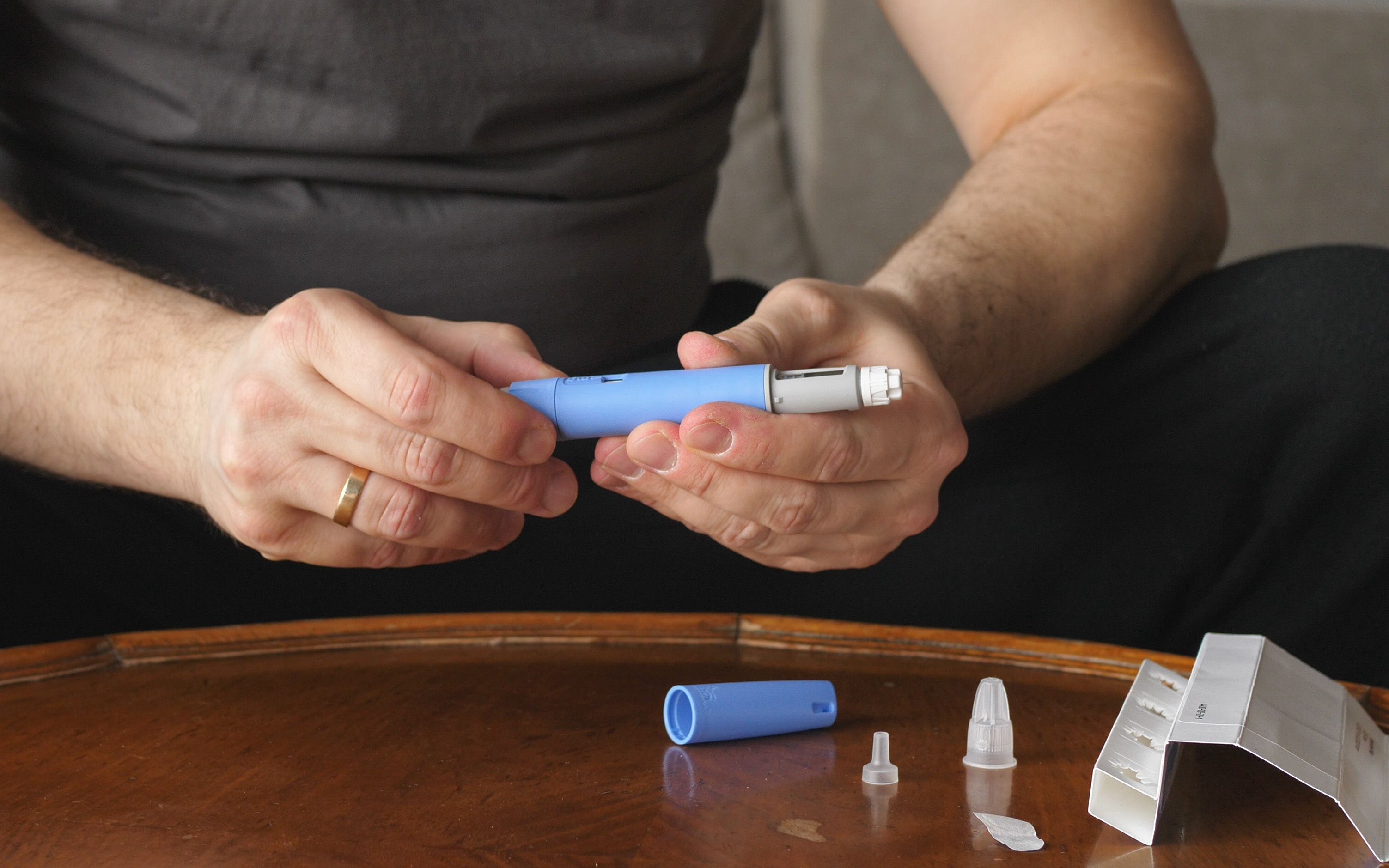- Case-Based Roundtable
- General Dermatology
- Eczema
- Chronic Hand Eczema
- Alopecia
- Aesthetics
- Vitiligo
- COVID-19
- Actinic Keratosis
- Precision Medicine and Biologics
- Rare Disease
- Wound Care
- Rosacea
- Psoriasis
- Psoriatic Arthritis
- Atopic Dermatitis
- Melasma
- NP and PA
- Skin Cancer
- Hidradenitis Suppurativa
- Drug Watch
- Pigmentary Disorders
- Acne
- Pediatric Dermatology
- Practice Management
- Prurigo Nodularis
- Buy-and-Bill
Article
Injectable silicone shows new promise
National report — A variety of options are available to treat HIV facial lipoatrophy, but, currently, off-label use of highly purified, medical grade 1000-centistoke silicone oil (Silikon 1000, Alcon Laboratories) as a permanent filler material seems to best fulfill the need for persistent, safe, cost-effective and natural-appearing correction, said Derek H. Jones, M.D., at the 63rd Annual Meeting of the American Academy of Dermatology.

"HIV facial lipoatrophy has become a problem of epidemic proportion and is important to address because it can be stigmatizing and have a devastating effect on quality of life. As long as it is properly administered, liquid injectable silicone seems to hold great promise as an effective, long-lasting and safe treatment for this condition," according to Dr. Jones, assistant professor of dermatology, David Geffen School of Medicine, University of California, Los Angeles.
Under investigation A 1000-cSt injectable silicone product (SilSkin, RJ Development) is currently being investigated. The marketed silicone oil Dr. Jones has been using (Silikon-1000) is currently approved by the U.S. Food and Drug Administration for intraocular use for the treatment of complicated retinal detachments.
Patient evaluation Evaluations of the patients in the pilot trial indicate silicone oil injection restored supple, even facial contours that have been maintained without the development of any significant adverse events over follow-up that extends up to four years in some patients. However, Dr. Jones notes that he has begun to see a handful of complications (mostly dermal ridging with erythema) associated with silicone oil injection in HIV patients who have come to him as referrals. He attributes the complications to superficial intradermal injection and notes that liquid silicone should be injected strictly into the subdermal plane, employing micro-droplet serial puncture technique with small volumes (2 cc per session) injected at monthly intervals.
"It is imperative that physicians who will be performing this procedure be appropriately trained, because this is a permanent product and complications from mistakes may not be forgiving," Dr. Jones says.
The monthly treatments should be repeated until complete augmentation is achieved. The total number of treatments needed generally ranges from three to 12 and can be judged based on a rule of thumb that three treatments are needed for each stage of lipoatrophy on the Carruthers' lipoatrophy scale (0 = none, 4 = severe). Patients should also be told that although no significant adverse events have been observed so far when proper administration technique is used, the answer to the question about long-term safety remains open until longer follow-up is available.
"Patients must be made aware that this treatment is still considered investigational," Dr. Jones says.
Cost of treatment Liquid injectable silicone costs about $750 per session, and so even for the individual who requires the maximum number of injections resulting in a total treatment cost of $10,000, it is more cost-effective than what Dr. Jones considers to be the next best alternative, which is the new temporary filler poly-L-lactic acid (Sculptra, Dermik Laboratories). Relative to other temporary injectable fillers, poly-L-lactic acid seems to offer greater durability - the benefit from a series of injections can persist about 12 to 24 months and sometimes even longer. In addition, it has an advantage in stimulating deposition of the body's own collagen.
Safety profile It also seems to have a favorable safety profile. While about 50 percent of patients in European studies developed subcutaneous palpable nodules, they were generally not bothersome or visible. Therefore, cost presents the main drawback of poly-L-lactic acid treatment for HIV facial lipoatrophy.





